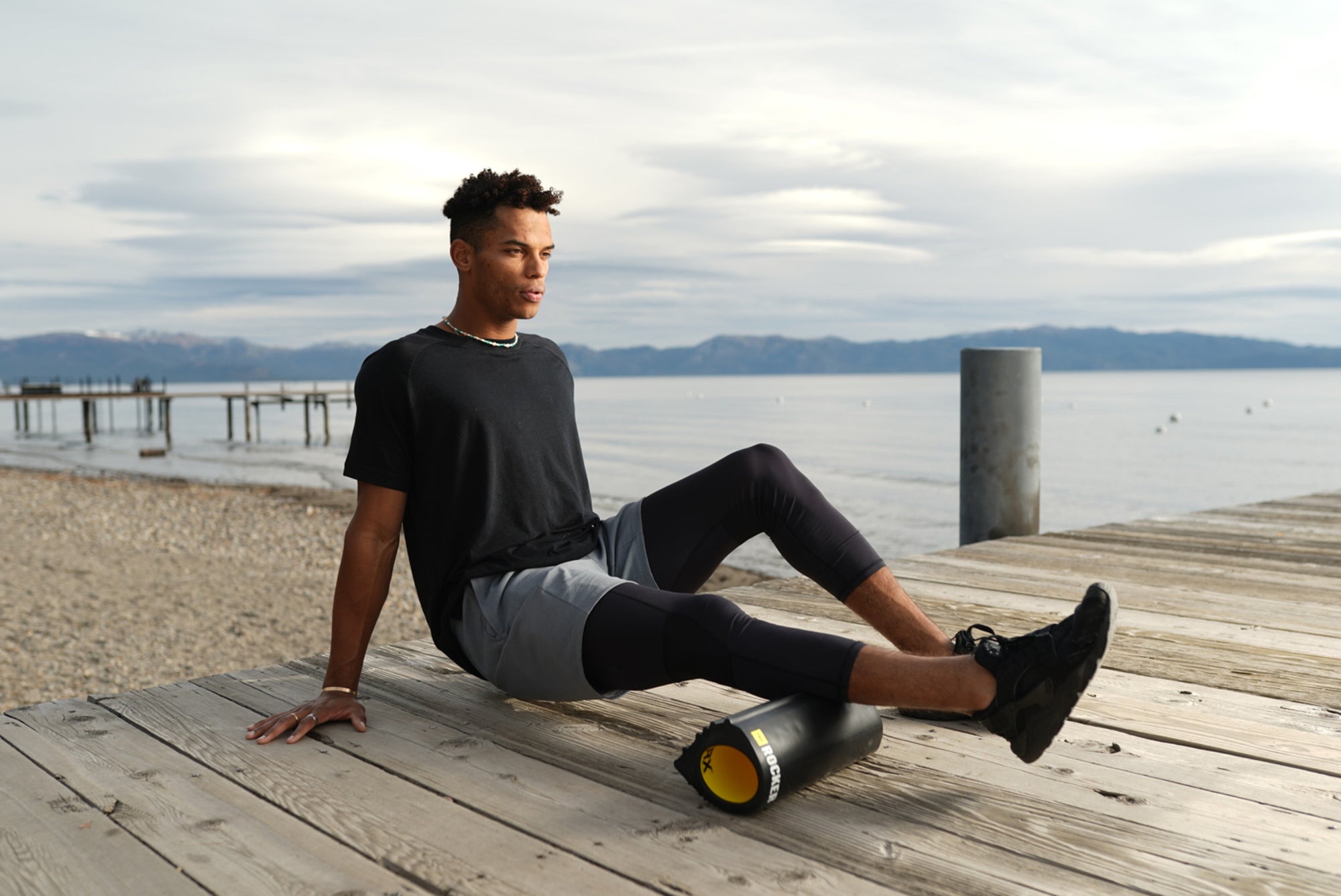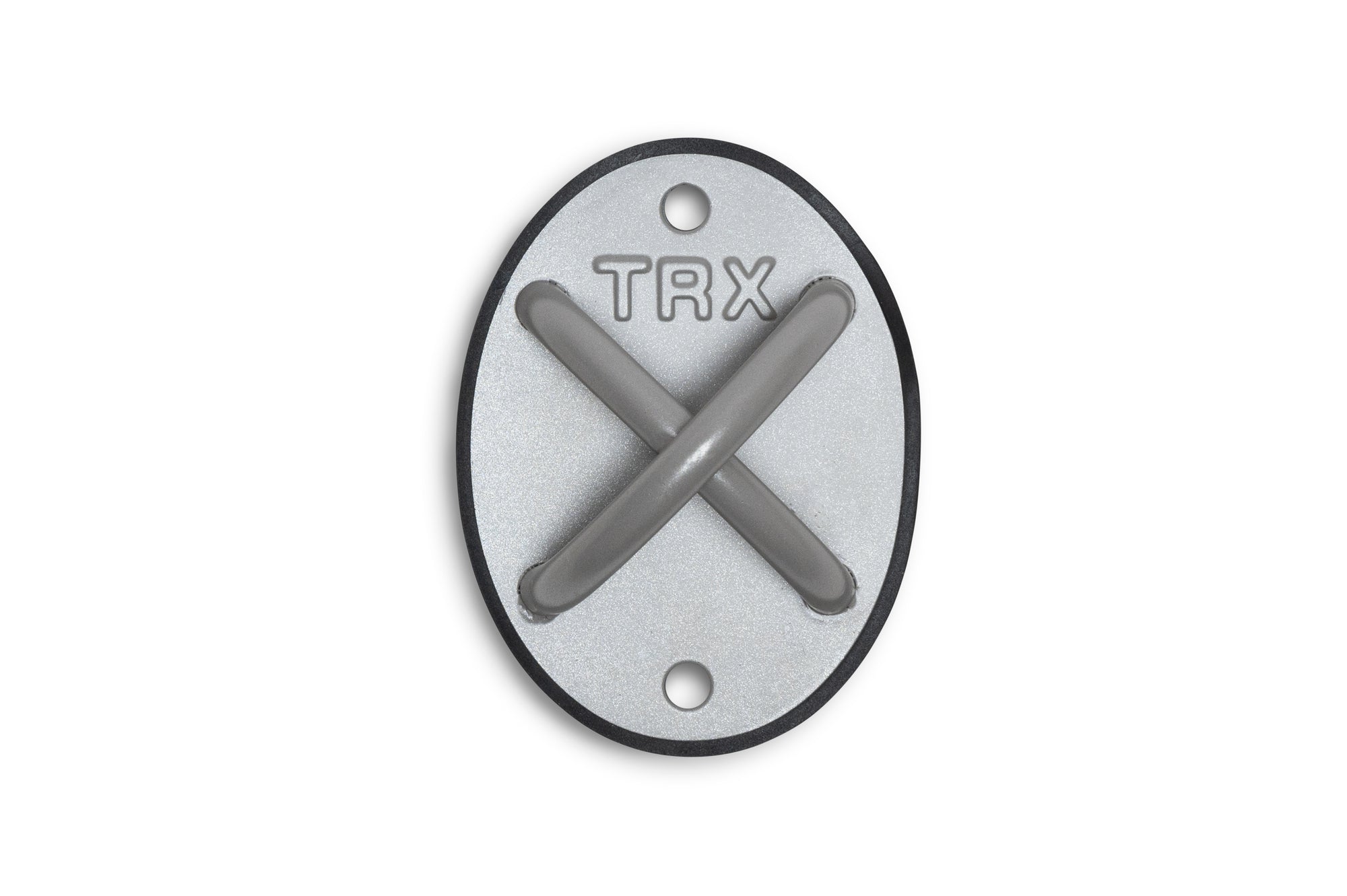The most common length adjustments for TRX Straps are fully-shortened, fully-extended, and mid-calf. For the majority of TRX core exercises, you’ll need to adjust your straps to the mid-calf length. With your Suspension Trainer hanging straight down from the anchor, that means the handles will be around the lower half of your knee caps, and the bottom of the foot cradles should rest by your calf muscles.
Now the important part: how to adjust your straps.
In the middle of each strap on your Suspension Trainer, there’s a square-shaped Barrel Lock Adjuster, and—just above it—a tab. (On the Home2 and Pro4 systems, the tab is yellow. On the Tactical and Digi Camo systems, it’s black.) In its “locked” mode, the Barrel Lock Adjuster faces up and down.
To shorten the length of your straps, tilt the Barrel Lock Adjuster toward you, so it’s parallel with the ground. Keeping it parallel with the ground, use your free hand to pull up on the tab of the strap you’re shortening. When you let go of the Barrel Lock Adjuster, it re-locks its position. Repeat on the second side before beginning your workout.
To lengthen the straps, flip the Barrel Lock Adjuster toward you and pull down while holding it open. Some people find it easier to lengthen the straps by extending both sides at the same time.
The Workout
Enough with the setup; let’s get to the fun stuff! TRX Training Club Coach Miguel Vargas has cooked up an 11-minute, core-torching session with just a few simple exercises.
This TRX Core Workout starts on the ground with two plank-based moves: TRX Mountain Climber and TRX Side Planks. Next, your shoulders and wrists get a break as Miguel takes you through two standing core exercises, the TRX Hip Drop and the TRX Rotational Ward. Finally, you finish where you started—back on the ground with a bonus option to level up your TRX Side Plank.
Increase or decrease your difficulty throughout this workout by adjusting your position relevant to the anchor point. When you’re on the ground, with your feet in the foot cradles for TRX Plank-based exercises, the exercises feel easier when you get closer to the anchor point. For the standing exercises in this series, the opposite is true: Stepping closer to the anchor point will make the exercise harder, and stepping away from the anchor will make it easier.
Non-Stop Core, Explained
The secret sauce for all that core work is the stabilizing loop at the top of your Suspension Trainer. (It’s the circle under the carabiner that shifts back and forth.) To keep that loop from shifting, you have to engage your core muscles, even when you’re doing bicep curls or squats. In the TRX Mountain Climbers in this workout, you may feel that loop sawing, or shifting up and down. When you apply even pressure to the foot cradles or handles during an exercise, you’re engaging your core to eliminate that shift.
When you do “core work” on your TRX Suspension Trainer, you’re actually doubling the core effort. (Look at you, go-getter!) That’s because you’re adding the challenge of steadying the stabilizing loop on top of the named exercise. It’s the reason TRX Suspension Training is all core, all the time.

Let’s Keep Moving!
You’ve survived your first TRX Training Club core class, and there’s plenty more where that came from. Miguel and our team of world-renowned trainers at TRX Training Club host daily live workouts, plus hundreds of on-demand sessions.
You can access the full range of classes, including bodyweight, kettlebell, and yoga sessions, for only $19.99 per month. New members get a free trial, so sign up and keep the momentum going with our expert crew.

When we say “core,” we’re not talking about superficial six-pack abs; we mean the muscles that help you move all day long. A strong core makes standing, sitting, and walking feel better. Suspension Training efficiently targets those muscles, while letting you adapt any exercise in the way that works best for you.
Want to stand taller and feel stronger? It all starts with your core and the TRX Suspension Trainer.






